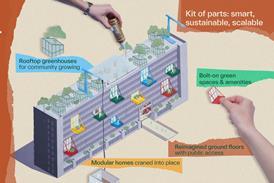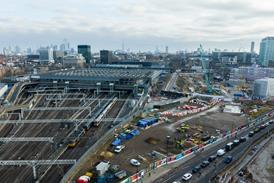For instance, product manufacturers must provide easily comparable information so design teams can make informed decisions, says Andrew Mellor

Environmental issues have returned to prominence recently after a number of years when sustainability was downgraded. Climate change is very high on the agenda, with the likes of David Attenborough advising us that as a result of climate change many natural species are at risk of extinction and that severe weather events will become far more frequent.
Public demonstrations – such as Friday’s #schoolstrike4climate – are further raising awareness of the issues and the UK government is the first in the world to declare a climate emergency.
The consumption of plastic and its improper disposal in our oceans is another major discussion point. Plastic is, of course, produced from oil and its production is therefore itself a contributor to climate change.
It is well documented that the construction industry produces emissions that contribute to climate change. The buildings we live and work in also contribute significantly to these emissions. Given how many new homes and other buildings the country needs, there is a clear requirement to reduce the emissions related to construction processes including product manufacture and supply.
In order to achieve this it will simply not be possible for the manufacturers of materials to continue as they are. Manufacturing plants, including those of the automotive industry, and factories will need to operate by using renewable energy. Vehicles and plant will need to be electrically operated and charged using electricity from renewable sources. Such responses are not in the direct control of many in the industry.
Making decisions on the least environmentally damaging solutions is very difficult and requires detailed research. For instance, a product may reduce operational carbon emissions but it may also generate a lot through its manufacture and end-of-life recycling. Talking of its life, how long will that be? Will the product need replacing more often than a similar item which used more fossil fuels in its production?
Then we have decisions about materials. Is it better environmentally to use plastic or metals? Is there more virgin aluminium than oil (to produce plastic) left in the world? These kind of whole-life-cycle conundrums will need to be considered in much greater detail than previously. Easily understood and comparable information must be provided so that design teams can make informed decisions alongside clients and contractors.
If the government is to mandate that Declaration of Performance certificates on construction products are required (as Dame Judith has recommended) the certificates should, in my opinion, be included in statements on the products’ environmental performance. These statements must include their impact on climate change through their lifetime as well as their resource consumption during both manufacturing and maintenance.
These certificates should not only demonstrate fire safety performance but also other performance aspects which are crucial for the building to operate as it was designed and in order to minimise its impact on the environment and natural resources.
All of this will be complex to achieve, but we simply don’t have a choice. The future of our planet depends on us getting this right.
Postscript
Andrew Mellor leads the development consultancy team at PRP. The practice has been advising MHCLG and conducting research around policy and building regulations.
















5 Readers' comments